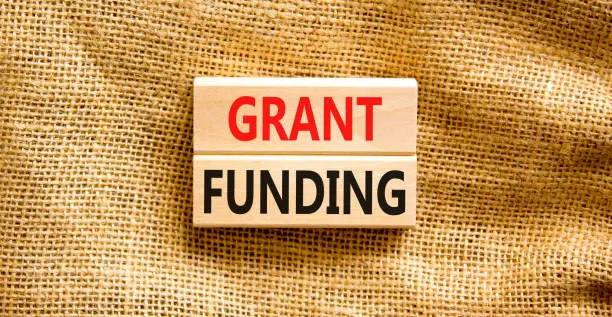How to Measure and Report on Grant Funded Project: A Comprehensive Guide with Practical Examples.
Managing a grant-funded project is an intricate process that requires meticulous planning, implementation, and assessment.
As a project manager, it’s essential to demonstrate the impact of the grant to stakeholders, including the funding agency, through effective measurement and reporting.
In this comprehensive guide, we will delve into the key aspects of measuring and reporting on grant-funded projects, providing you with practical examples to help you better understand and apply these concepts.
Steps on how to measure and report on Grant Funded Project:
1. Establish Clear Goals and Objectives
Before diving into the process of measuring and reporting, it’s crucial to establish clear goals and objectives for your grant-funded project.
This step sets the foundation for your entire project management strategy and ensures that all stakeholders are on the same page.
Consider using the SMART (Specific, Measurable, Achievable, Relevant, and Time-bound) criteria to help define your project’s goals and objectives.
Example:
A nonprofit organization received a grant to improve adult literacy rates in their community. Their objective could be to increase the literacy rate among adults aged 18-60 by 10% within 12 months, using targeted educational programs.
2. Develop a Monitoring and Evaluation Plan
A comprehensive monitoring and evaluation (M&E) plan is essential for effectively measuring and reporting on your grant-funded project.
The M&E plan should outline the methods, tools, and resources needed for data collection and analysis throughout the project life cycle.
Key components of an M&E plan include:
- A clear framework outlining the project’s objectives, outcomes, and indicators
- Data collection methods, such as surveys, interviews, or focus groups
- A schedule for data collection and analysis
- Roles and responsibilities of team members involved in the M&E process
3. Implement Performance Metrics and Indicators
To effectively measure your grant-funded project’s progress and success, you’ll need to establish relevant performance metrics and indicators.
These should be closely tied to your project’s objectives and designed to track progress towards achieving those objectives.
There are two types of indicators:
- Output Indicators: These measure the direct products or services delivered by the project. Examples include the number of training sessions conducted or the number of people who attended an event.
- Outcome Indicators: These measure the changes or benefits that result from the project. Examples include increased literacy rates or improved employment opportunities.
Example:
In the adult literacy project mentioned earlier, an output indicator could be the number of educational workshops held, while an outcome indicator could be the percentage increase in literacy rates among participants.
4. Conduct Data Collection and Analysis
Data collection and analysis are critical components of your M&E process. They provide the evidence needed to demonstrate your project’s impact and inform your reporting.
Here are some steps to follow for effective data collection and analysis:
- Choose the right data collection methods, such as surveys, interviews, or focus groups
- Develop data collection tools, such as questionnaires or interview guides
- Train team members on data collection techniques and ethical considerations
- Schedule data collection activities in line with your M&E plan
- Analyze the collected data to draw insights and inform project adjustments, if necessary
5. Report on Grant Funded Project Outcomes
After collecting and analyzing data, it’s time to report your project’s outcomes to stakeholders, including the funding agency. Grant-funded project reports typically include the following elements:
- Executive Summary: A brief overview of the project, its objectives, and the key findings.
- Introduction: A more detailed description of the project, its goals, and the context in which it was implemented.
- Methodology: An explanation of the M&E plan, including data collection methods and tools used.
- Results: A presentation of the project’s outcomes, supported by data and evidence, including comparisons to the initial objectives and any challenges faced.
- Lessons Learned: A reflection on what worked well, what didn’t, and any insights gained throughout the project implementation.
- Recommendations: Suggestions for future projects, based on the experiences and lessons learned from the current project.
- Appendices: Any additional information or materials that support the report, such as data tables, graphs, or case studies.
6. Practical Examples of Measurement and Reporting
To provide more context, let’s look at some practical examples of measurement and reporting for grant-funded projects:
- Example 1:
A nonprofit organization received a grant to provide mental health support services to veterans.
Their M&E plan could involve tracking the number of counseling sessions provided (output indicator) and measuring the improvement in veterans’ mental health scores (outcome indicator).
The final report would detail the number of veterans served, the mental health improvements observed, and any challenges faced or lessons learned.
- Example 2:
An environmental organization received a grant to promote sustainable farming practices in rural communities.
Their M&E plan could involve tracking the number of farmers trained in sustainable techniques (output indicator) and measuring the reduction in chemical fertilizer usage or increase in crop yield (outcome indicators).
The final report would showcase the training’s effectiveness, the environmental impact, and any recommendations for future initiatives.
7. Tips for Ensuring High-Quality Reports
To ensure your grant-funded project report is of high quality and effectively communicates your project’s impact, consider the following tips:
- Start the M&E process early: Integrating the M&E plan from the project’s inception will allow for more accurate data collection and analysis.
- Be transparent: Clearly explain your methodology, challenges faced, and any limitations in the data.
- Use visuals: Graphs, charts, and infographics can help illustrate your project’s outcomes more effectively and make the report more engaging.
- Proofread and edit: Take the time to review and revise your report to ensure it is well-organized, clear, and free of errors.
- Tailor your report: Consider the needs and expectations of your target audience (e.g., funding agency, stakeholders) when developing your report.
In conclusion, measuring and reporting on grant-funded projects is essential for demonstrating the project’s impact and ensuring continued funding.






